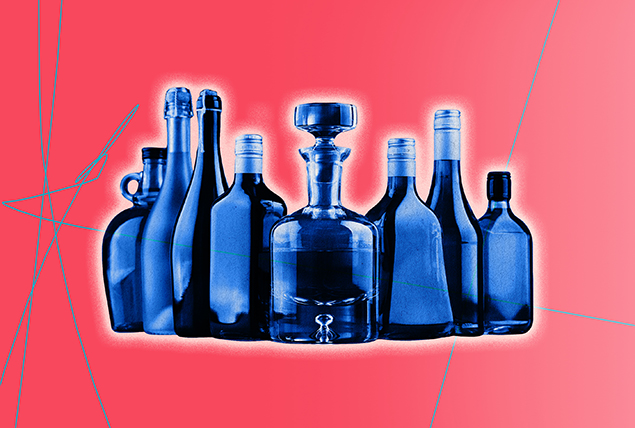Getting Treatment for Alcohol Use Disorder

Alcohol use disorder (AUD) is a chronic disease characterized by uncontrolled drinking and a preoccupation with alcohol. Touching every aspect of life and severely impacting both physical health and personal safety, this common disorder affected an estimated 14.5 million Americans in 2019, though only about 7 percent of people who meet the criteria for AUD actually undergo treatment.
Research indicates that as consumption of alcohol increases, so does subjective sexual desire and the likelihood of risky sexual behavior. However, alcohol use has also been shown to lower physiological arousal in women. For women dependent on alcohol, the most common forms of sexual dysfunction include an increase in genitourinary issues, dyspareunia (painful intercourse) and low vaginal lubrication.
The risk of long-term erectile dysfunction (ED) has been linked to heavy alcohol use in men. A study from 2007 indicated 72 percent of alcohol-dependent male subjects had one or more sexual dysfunctions, the most common of which were ED, premature ejaculation and low desire.
Heavy alcohol consumption can also reduce the production of testosterone.
There are treatment options available for alcohol use disorder, although recommended treatments may depend on the condition's stage, which can range from mild to moderate to severe. Alcohol use disorder is one of the most common psychiatric disorders in the United States, but despite its prevalence, it often goes untreated even though many people with AUD could benefit from treatment.
According to Lawrence Weinstein, M.D., chief medical officer at American Addiction Centers, a national network, clinicians can determine AUD using the 11 criteria in the Diagnostic and Statistical Manual of Mental Disorders, Fifth Edition (DSM-5).
"Based on the number of symptoms present, the severity of the disorder can be determined," he said. "If at least two of the symptoms listed have been experienced, the individual meets the diagnostic criteria for a mild alcohol use disorder. At this point, treatment would be recommended."
As the number of criteria met increases, so does the stage of the disorder.
AUD can affect every component of someone's life, from work and relationships to finances. The Columbia University Psychiatry Department suggests that aside from diagnosing a problem from numerical criteria, it can be helpful for individuals to think about their alcohol-related behaviors when considering whether it's time for treatment. Strained relationships and loss of interest in hobbies can be signs that it's time to consider receiving care.
Treatment as an outpatient
An individual in outpatient care for alcohol use disorder attends treatment at an outpatient center and returns to their home daily, providing a life-to-treatment balance.
Outpatient programs vary in terms of intensity, with some offering a full day of treatment and others having treatment for fewer hours or days per week. Outpatient programs generally consist of counseling, support groups and recommendations for future care. Partial hospitalization programs also include intensive care but allow individuals to return to their place of residence each night.
"Candidates for outpatient treatment may include those who require structured support to maintain their abstinence from alcohol who also may be busy with activities of daily life," Weinstein explained.
Someone's success at an outpatient program may rely on factors at home, such as whether they have a strong support system and there is alcohol in the home. If a person cannot control alcohol use when leaving the outpatient facility, a more intensive program may be recommended.
Weinstein added that people might opt for outpatient treatment as a step-down level of care after completing a partial hospitalization or an in-patient program. Sometimes outpatient programs are a person's first or only form of treatment.
Treatment as an inpatient
"Inpatient treatment for an alcohol use disorder would be best for those who are unable to control their drinking and suffer withdrawal symptoms during periods of time without alcohol," Weinstein explained. "These symptoms indicate that the individual has become physically dependent on the presence of alcohol to maintain their ability to function."
Inpatient supervised care, at this point, is a matter of safety.
"When chronic consumption has reached this level, detoxing under the supervision of medical professionals is mandatory," Weinstein said. "Cessation at this rate can be fatal."
Factors such as medical history and age may also play a role in the detox phase. However, people with any stage of alcohol use disorder may elect inpatient care for its intensive treatment benefits, access to emotional support around the clock and a change in the environment, which can also help shift behavior.
Inpatient treatment involves staying overnight at a facility for the allotted course of treatment days. While programs may differ in the length of stay, generally, inpatient programs range from 30 to 90 days. Length of stay may vary depending on an individual's recommended treatment or severity of AUD.
Similar to outpatient treatment, inpatient care typically involves a schedule full of therapy, support groups and other activities. The main difference is that the individual does not return home at the end of each day. For its round-the-clock care, inpatient programs might be the best choice for people in the later stages of alcohol use disorder.
When looking for treatment, Weinstein recommended screening for the following qualifications:
- Calming environment
- Credentialed staff
- Develops an aftercare plan for the patient
- Offers family therapy
- Offers individualized treatment plans
- On-site access to quality medical care
- Program accredited by the Commission on Accreditation of Rehabilitation Facilities (CARF) or the Joint Commission (formerly the Joint Commission on Accreditation of Healthcare Organizations, or JCAHO)
- Has an alumni program or network that provides ongoing support after treatment
Therapy for AUD
Therapy is another crucial component of the treatment of alcohol use disorder, because AUD often occurs alongside other psychiatric disorders, such as depression or PTSD. A therapist can help individuals recognize coping skills, plan around high-risk situations where alcohol may be involved and identify early signs of relapse.
While other forms of therapy may be used, cognitive behavioral therapy (CBT) is most common for treating AUD.
"Cognitive behavioral therapy is considered the preferred therapeutic modality for alcohol use disorder," Weinstein said. "This type of therapy helps those with an alcohol use disorder recognize and resolve thoughts that may influence their behavior to drink."
CBT uses the assumption that someone's thoughts, emotions and behaviors are connected, and it's used to find healthier solutions to problems. Behavioral therapies can be helpful and effective in encouraging self-change.
"Medication-assisted treatment in conjunction with behavioral therapy is also recommended for some patients," Weinstein said.
Stepping away from AUD
Twelve-step programs for the treatment of alcohol use disorder are evidence-based mutual support programs. Twelve-step programs can be helpful alongside other treatment options, especially for people in the later stages of AUD.
Alcoholics Anonymous (AA) is a community-based, international 12-step program that promotes alcohol abstinence. Meetings are free and occur at many locations near you either virtually or in person throughout a given day.
AA employs a system of peer-based support in the form of sponsors, many of whom have made progress in the program and are in recovery. A community of individuals who have experienced AUD firsthand can be helpful for anyone looking for support. Although AA is certainly one of the more popular community support programs for recovery, there are others you may want to consider, such as SMART Recovery.
Relapsing and craving alcohol, especially in the first four years of recovery, is common. But achieving and maintaining recovery is possible. Aftercare plans following both inpatient and outpatient treatment are essential.


















